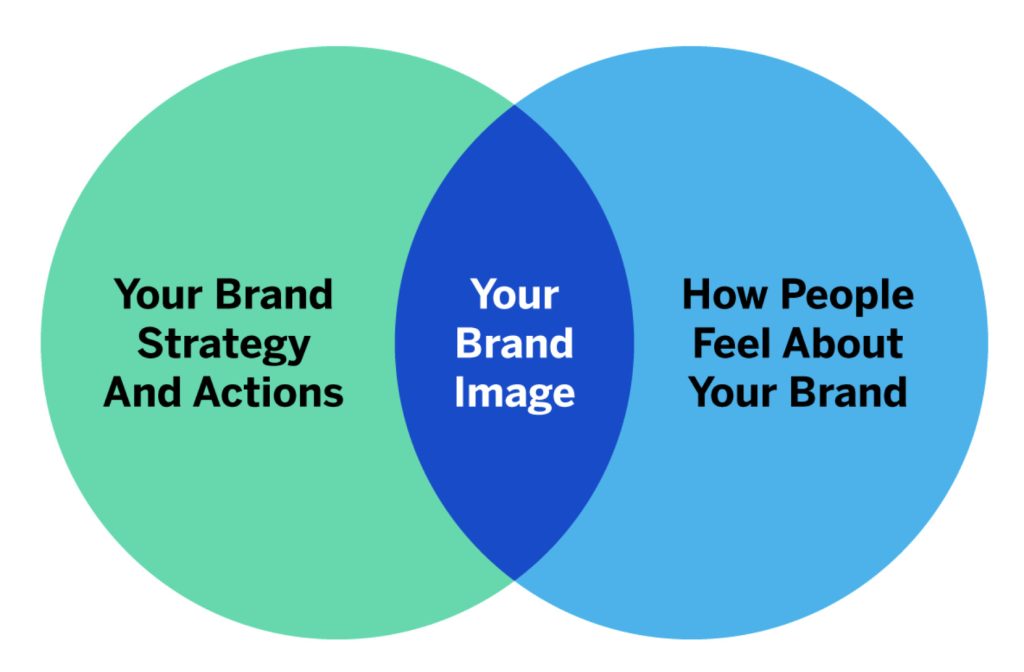In the realm of branding, the terms “brand reputation” and “brand image” often get mixed up.
But they’re distinct, and in today’s digital era where 85% of consumers trust online reviews as much as personal recommendations, clarity is essential.
💡 Read Brand Reputation 101: Monitoring, Analysis, and Management Tools
Let’s untangle the difference between brand reputation and brand image to help you navigate the branding landscape effectively.
What Is Brand Reputation?
Brand reputation is the collective public perception of your brand. It encompasses how various stakeholders, including customers, employees, partners, and the general public, perceive and feel about your brand at every touchpoint and interaction.
This perception is shaped by a multitude of factors, such as your brand’s visual identity, tone of voice, presence on social media, media coverage, online reviews, quality of customer service, adherence to employee policies, in-person and online experiences, and much more.
Think of brands like Toyota or Apple, known for their consistent quality and reliability. They have impeccable brand reputations.
Toyota, over the years, has built a reputation for producing durable and safe vehicles, which has led to high levels of trust among consumers.
Similarly, Apple is renowned for its innovative products and a commitment to user-friendly technology, fostering a strong and positive brand reputation for innovation and customer satisfaction.

These brands’ reputations have been shaped by their actions and consistent delivery of quality, earning them the trust and loyalty of customers.
What Is Brand Image?
Brand image is the perception that customers have of your brand, shaped by their interactions and experiences.
Unlike brand reputation, brand image isn’t solely tied to a purchase or product use; it’s a broader understanding of your brand’s identity. This perception can evolve over time and isn’t uniform among all customers, highlighting the importance of maintaining a consistent brand image.
Consider Apple again; their sleek and innovative marketing campaigns have successfully crafted a brand image of innovation and luxury. Through carefully designed advertisements and product presentations, Apple conveys a sense of cutting-edge technology and premium quality.
This deliberate branding effort has shaped a brand image that aligns with their vision and appeals to consumers seeking innovation and high-end products.
Read Ultimate Guide for CEO Reputation Management

Key Differences Between Brand Reputation And Brand Image
Nature:
- Brand Reputation: It’s the consolidation of long-term factors, reflecting the overall perception built over time.
- Brand Image: It’s individual and momentary, susceptible to change based on various factors.
Timespan:
- Brand Reputation: Takes years to establish and can be relatively stable over time.
- Brand Image: Can change rapidly, sometimes in a matter of minutes or hours.
Dependency:
- Both depend on a combination of internal and external factors to evolve in the public’s eyes.
Complementary Nature:
- Both concepts work in tandem, shaping the company’s growth strategies and defining its brand identity.
- They directly influence the relationship between the brand and its consumers.
Challenges Of Brand Reputation And Brand Image
Brand Reputation Challenges:
- Consistency is Key: Maintaining a positive reputation requires consistent effort, as one misstep can tarnish it.
- Long-term Commitment: Building a strong reputation takes time and dedication, and it’s vulnerable to external factors.
- Crisis Management: Effectively addressing and recovering from reputation-damaging events is a complex challenge.
- Public Scrutiny: In the age of social media, public opinions and scrutiny can influence reputation rapidly.
Read Brand Reputation Management: Top 5 Tips for Success

Brand Image Challenges:
- Alignment Across All Touchpoints: Crafting and maintaining the desired brand image can be challenging, as it requires aligning every aspect of your branding efforts.
- Consistency Across Channels: Ensuring a consistent image across various marketing channels and customer interactions can be demanding.
- Adaptation to Trends: Adapting the brand image to evolving consumer trends and preferences is an ongoing challenge.
- Competitive Landscape: Standing out in a crowded market while maintaining a unique and appealing image is a constant struggle.
Leveraging Both For Success
Emphasizing Synergy:
- Holistic Approach: To build a strong brand, you need both a solid reputation and a compelling image.
- Foundation and Appeal: Reputation provides trust, while image attracts and engages.
Strategies:
- Aligning Actions with Image: Share tips on how to align your actions with your desired image, such as consistent messaging and customer experiences.
- Reputation as a Catalyst: Explain how to use your reputation to bolster your image, leveraging positive associations and trust.
- Feedback Loop: Establish a feedback mechanism to continuously refine both reputation and image strategies.
- Consistent Branding: Highlight the importance of consistent branding across all touchpoints, ensuring alignment with your desired image.
Read The Power of Continuous Media Monitoring: 7 Ways to Drive Success
The Importance Of Image And Reputation
These two pillars serve as the bedrock upon which a company’s success is built, influencing customer loyalty, trust, and market positioning. Here’s a closer look at why they matter:
Building Trust:
- Credibility: A positive brand reputation establishes credibility in the eyes of your audience, making them more likely to engage with your brand.
- Confidence: A compelling brand image inspires confidence in your products or services, leading customers to choose you over competitors.

Competitive Advantage:
- Stand Out: A well-crafted brand image sets you apart in a crowded marketplace, making it easier for consumers to remember and choose your brand.
- Reputation as an Asset: A strong reputation can be a distinct competitive advantage, helping you weather crises and maintain market share.
Customer Relationships:
- Loyalty: A positive reputation fosters customer loyalty, as satisfied customers are more likely to return and advocate for your brand.
- Alignment with Values: A carefully crafted brand image that aligns with customer values creates a deeper emotional connection.
Risk Management:
- Crisis Resilience: A solid reputation acts as a buffer during challenging times, allowing you to address issues with credibility and trust.
- Image Adaptability: A flexible brand image can help you adapt to changing market trends and consumer preferences.
Read 7-Step Risk Management Guide for PR Professionals
Long-term Success:
- Sustainability: Both image and reputation contribute to a brand’s sustainability by ensuring its relevance and appeal.
- Positive Outcomes: When nurtured effectively, they generate positive long-term results and contribute to overall brand success.
Read Small Business Reputation 101: Tips and Tools for Success
How To Build A Good Brand Reputation And Brand Image
Building a strong brand reputation and crafting an appealing brand image require dedication, strategy, and a thorough understanding of your brand’s mission and values. Every interaction and touchpoint with customers matters in shaping these essential elements
What’s The Story? What’s The Purpose?
Before you embark on brand-building strategies, it’s essential to define your brand’s story and purpose. These are closely tied to your organizational culture and are what connect you with your audience. Start by understanding where you came from, who you are, and what your purpose is.
Read How to Create a Rebranding Strategy: A Complete Guide

This exercise begins with leadership and employees and should naturally extend to the public. Human beings connect through stories, so crafting a compelling narrative and clear purpose is vital for building a brand that resonates.
Understanding Your Audience And Building Meaningful Engagement
In today’s business landscape, comprehending your audience is essential for success. Here’s why and how:
Significance of Audience Research:
- Reveals brand associations and market positioning.
- Provides insights into competitor perceptions.
- Guides effective actions and decisions.
- Gauges how your brand is perceived.
Empathetic Engagement:
- Beyond product quality, connecting with stakeholders is key.
- Cordial communication fosters lasting relationships.
- Actively listening and addressing concerns enhances engagement.
Practical Approach:
- Utilize social networks for insights.
- Combine research with data-driven decisions.
- Adapt and innovate based on audience feedback.
Read 5 Steps to Creating a Perfect Reputation Management Strategy
Final Thoughts
In your branding journey, always keep in mind this fundamental distinction: brand reputation is what people say about you, while brand image is what you want them to say. These two pillars are the cornerstones of a strong and resilient brand.
Now that you understand the crucial difference between the two, it’s time to strategically leverage both to create a brand that stands the test of time. By nurturing a positive reputation through consistent actions and crafting a compelling image that resonates with your audience, you can forge a brand identity that engages and retains customers.
Josef Mohamed is the SEO and Web Design Manager at Vollgas-Marketing, a recruitment agency helping German SMEs find top talent and boost their online visibility.